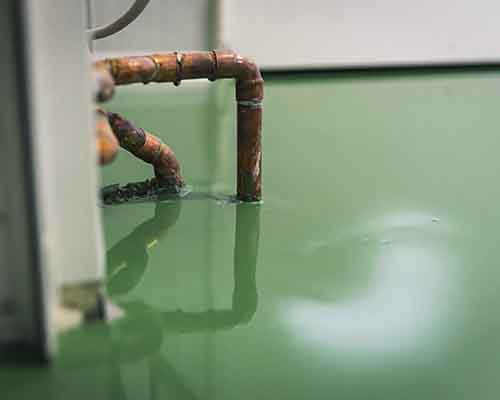Seepage Solution
Water leakage and seepage solution , treatment & repair!
Dampness of walls and water seepage are common problems faced by homeowners. This happens due to poor quality construction and lack of waterproofing measures during construction of the home.
It can cause dampness of the walls, efflorescence (puffy white deposits on walls) and peeling of paint These dampness problems need to be tacked for a good home painting experience. There seems to be a lot of confusion on what waterproofing chemicals need to be used and the process involved. So, we decided to write this guide to set water leakage and seepage solution for walls and roof . In this post you will learn about common waterproofing issues and their causes, what waterproofing chemicals need to be used and waterproofing procedures that need to be followed.
We have covered solutions and fixes for existing buildings. Preventive measures that are to be taken during construction of buildings will be covered later in another post. Qaswa chemical provides best water leakage and seepage solution in Lahore .
Treating Mild Dampness in Interior Walls!
Interior walls develop damp patches because of the aforementioned reasons. In case if these are mild patches, they can be treated without much hassle and effort. Remember to treat not just the patches but also at least 2 feet around the damp patch.
1. Use an iron brush to remove loose material around in the area to be treated. Remove patches of loose plaster if needed.
2. In case the plaster has been removed re plaster the patches using mortar made of cement, sand and a plasticizing additive chemical like Qaswa wall seal. Allow plaster to cure and dry out before the next step
3. Apply a waterproof coating Qaswa Seal on the re-plastered area using the application instructions. This layer will prevent seepage and can also be used as a surface for repainting.
4. The surface can now be repainted after surface preparation.
Treating Severe Dampness in Interior Walls!
Severe dampness is characterized by peeling plaster, severe visible damp patches on the wall and white chalky deposits on the wall. To tackle this problem of water leaking from walls, the plaster has to be completely removed to apply waterproofing from the brick level. Qaswa chemical provides best water leakage and seepage solution in Lahore.
1. Break the damaged plasteron the walls up to the brick level Remember to clear a patch 2 feet in excess of the damp patch.
2. Apply a waterproof coating agent Qaswa rock seal directly on the bricks according to the right procedure
3. Re plaster the exposed patchusing mortar using cement, sand and a plasticizing additive chemical . Allow plaster to cure as applicable and dry out.
4. Re paint the area after base preparation.
Repairing & Waterproofing Exterior Walls!
Seepage in mid level walls and those around windows can be due to cracks in the external walls. Before treating the interior walls you need to repair and waterproof the exterior by following these steps.
1. Fill cracks in exterior walls using an exterior crack sealant .
2. To protect areas around window frames from water seepage from exterior walls, fill the gaps between the window frames and walls using a special bonding sealant.
3. After repairing the exterior walls for any cracks, apply any exterior paint with waterproofing abilities.
4. Qaswa chemical provides best water leakage and seepage solution in Lahore.
How to treat water seepage and leakage on rising wall!
Rising damp affects the lower region of walls because of rising ground water within the wall due to capillary action. This causes efflorescence (white deposit) and peeling of the paint.
Research In Seepage!
seepage failure would take the form of seepage through the structure or foundation which increases and removes material as the flow builds up leading to the development of a pipe and ultimately to failure. Depending on the location of the seepage outlet, some measure of warning may be expected.
These assessments were performed to modem safety standards and hence seepage failure is unlikely.
Seepage failure problems, which are including piping, quick sand, boiling and so on, are typical 3-D problems with large deformations. Furthermore sand near/at failure state due to seepage force is almost liquefied. It is, therefore, difficult to predict the seepage failure using a conventional soil-water coupling deformation analysis method.



